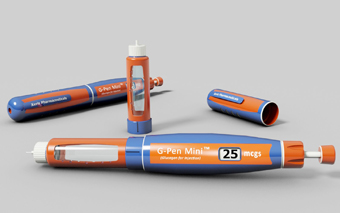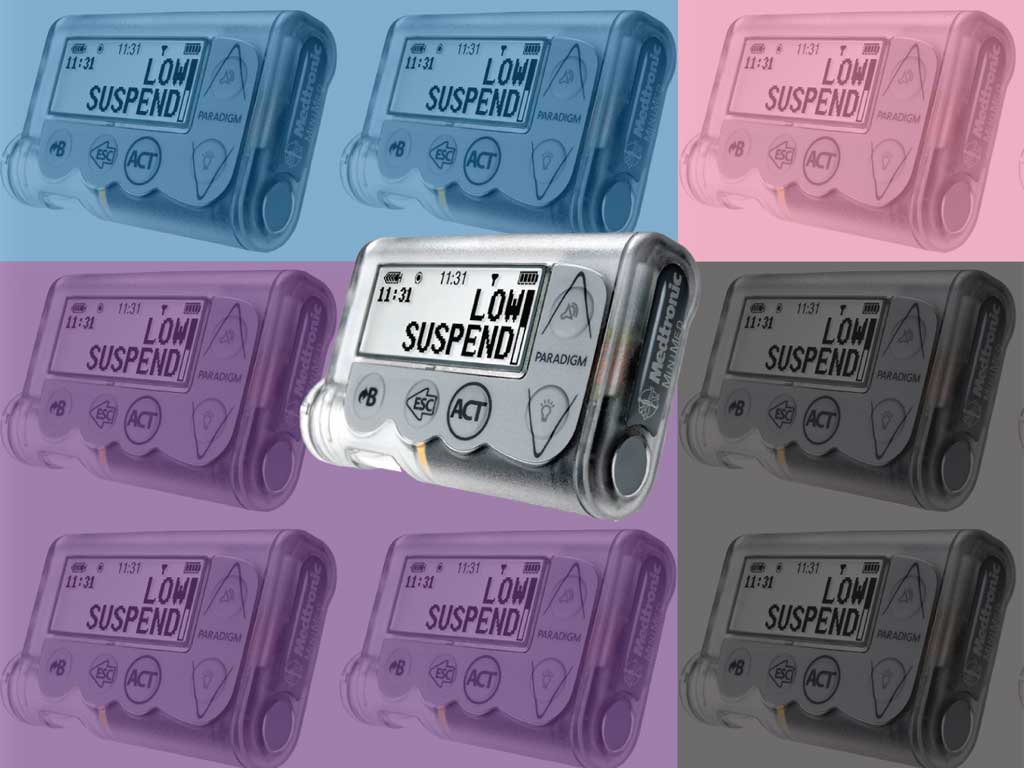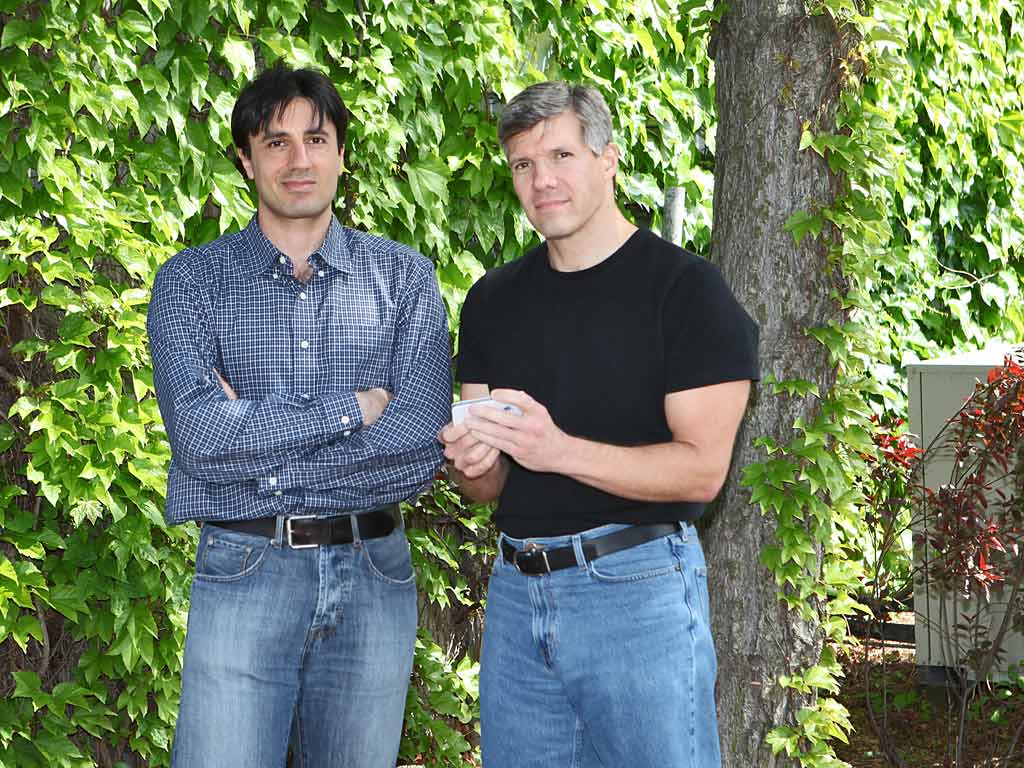Harnessing Hypos: Glucagon As An Everyday Tool

Beta cells take up about two-thirds of the space in islets, and stimulating or replacing them has dominated approaches to treatment or potential cures for diabetes for almost 100 years. Alpha cells that populate most of the remaining third of human islets have received comparatively little attention. It wasn’t until 1923 that researchers identified the glucagon-enabling role of alphas. Since then, glucagon has languished from neglect, except as a last resort for hypoglycemic events. No more. According to Dr. John Kinzell, co-founder and Executive VP of a biopharma company, Xeris Pharmaceuticals. He and Xeris are moving glucagon from “rescue dog” status to serving as a constant companion for people with diabetes.
 Xeris is developing a liquid glucagon that will last for two years at room temperature and promises to change the way people treat diabetes, whether they are Type 1 or Type 2. The company’s glucagon product farthest down the path to clearance is G-Pen™, a rescue treatment for severe hypoglycemic events (hypos), where a caregiver typically administers the injection. G-Pen™ is a user-friendly product with only two steps to injection. A second, broader use glucagon product in development, the G-Pen Mini™, uses the same glucagon formulation, but is intended for day-to-day use rather than emergencies. The Mini™ allows for quick and easy glucagon injections in small doses, offering a non-caloric way for diabetics to treat mild to moderate hypoglycemic events (hypos). Indeed, it may finally allow people with diabetes to control their glucose levels much like a normal pancreas would, by allowing insulin and glucagon to work together.
Xeris is developing a liquid glucagon that will last for two years at room temperature and promises to change the way people treat diabetes, whether they are Type 1 or Type 2. The company’s glucagon product farthest down the path to clearance is G-Pen™, a rescue treatment for severe hypoglycemic events (hypos), where a caregiver typically administers the injection. G-Pen™ is a user-friendly product with only two steps to injection. A second, broader use glucagon product in development, the G-Pen Mini™, uses the same glucagon formulation, but is intended for day-to-day use rather than emergencies. The Mini™ allows for quick and easy glucagon injections in small doses, offering a non-caloric way for diabetics to treat mild to moderate hypoglycemic events (hypos). Indeed, it may finally allow people with diabetes to control their glucose levels much like a normal pancreas would, by allowing insulin and glucagon to work together.
A quick and easy way to treat severe to life-threatening hypos has obvious benefits. But, controlling or averting mild to moderate hypoglycemia is equally important. A study published in 2011, reporting results among almost 1500 people who experienced mild to moderate hypos, showed that more than two-thirds of the reported events were at work, resulting in an average of almost 9 hours of missed time on the job. Multiply this by two to three events per month and the economic impact becomes clear. It’s not just emergency room costs we have to worry about, but lost productivity. G-Pen Mini™ is a potential solution.
Dance Of The Hormones
In a normal endocrine system, alpha and beta cells engage in an elaborate and continuous dance. The alpha cells produce glucagon hormones, raising blood glucose by causing the liver to release stored glycogen. Insulin converts glucose that enters the body through food into energy that powers all manner of tissues and organs, including the brain. The process keeps blood glucose levels stable, correcting both lows and highs repeatedly in response to food, exercise, stress, and illness.
It’s understandable that diabetes treatment initially focused on hyperglycemia. Diabetes, prior to externally dosed insulin, was almost a 100% guarantee of death due to uncontrollable levels of glucose in the patient. In contrast, hypoglycemia was almost unknown until the effects of injected insulin began to be studied. Indeed, modern delivery technology like insulin pumps and insulin pens may have accelerated the incidence of hypos by making it easier to treat yourself with insulin, which is a very potent drug. The emphasis on lowering and stabilizing blood glucose levels has made glucagon and its glucose-raising effects play second fiddle.
But glucagon’s time has come. If you feel as though you’ve read this story before, count yourself as a devotee of news about bi-hormonal diabetes treatments being developed by various artificial pancreas (AP) or bionic pancreas projects. Artificial pancreas efforts such as those undertaken by Drs. Ed Damiano and Steven Russell in Boston and Dr. Ken Ward in Oregon, aim to mirror the functions of a normal pancreas for insulin-using diabetics wearing pumps. Tandem Diabetes is working on producing a bi-hormonal pump that should be on the market in two to three years. Neither a bi-hormonal closed-loop AP nor a bi-hormonal pump will function without a ready source of room temperature stable, liquid glucagon, making Xeris’ product both timely and in line with the most advanced proposed new treatments for insulin-dependent diabetes.
Lonely Cells
 People generally don’t dance by themselves, and the same goes for cells. When beta cells are destroyed by immune attack in Type 1s or slowly die from exhaustion because of insulin resistance in Type 2s, alpha cells don’t know how to respond. Often, they either produce too much glucose or fail to act in response to low blood sugar. While insulin injections deal effectively with the “too much glucose” problem, the opposite effect presents itself as hypoglycemia, and glucagon offers a solution.
People generally don’t dance by themselves, and the same goes for cells. When beta cells are destroyed by immune attack in Type 1s or slowly die from exhaustion because of insulin resistance in Type 2s, alpha cells don’t know how to respond. Often, they either produce too much glucose or fail to act in response to low blood sugar. While insulin injections deal effectively with the “too much glucose” problem, the opposite effect presents itself as hypoglycemia, and glucagon offers a solution.
Dr. Kinzell and his colleagues at Xeris see hypoglycemia as Diabetic Enemy Number One. Hypos, especially “severe” hypos that require assistance from a caregiver or medical professional, are every Type 1’s greatest fear. Studies of Type 1 patients show that 1 in 20 deaths among people with diabetes occur due to uncorrected low glucose, and 3 million “severe” hypo events occur each year among about 6 million insulin-using diabetics. Some estimates point to as many as 164 million hypo “events” every year, an “event” being defined as low blood glucose serious enough to need correction but not completely disabling the patient. Type 1 patients begin to see hypoglycemia as part of the treatment routine. Just like the sting of shots or the maddening regularity of required treatment, hypos are part of the landscape. They’re not much fun, but they have to be endured. Just ask anyone who has ever tried to win an argument with a person suffering from low blood sugar.
The Unholy Trinity
What causes hypoglycemia in insulin users? There are at least three primary factors.
In a non-diabetic, as much as 80% of insulin that reaches the liver never gets into the bloodstream. Injecting insulin into subcutaneous tissue, from which it eventually enters the bloodstream at almost full strength, is very different than the way a normal pancreas secretes insulin. In a non-diabetic, the body uses just enough of its natural insulin supply to correct a glucose spike, and not a smidgen more. So, the strength of the injected insulin dose itself is an issue. When mealtime bolus insulin joins basal insulin and over-corrects the food intake situation it was injected to address, the result can be lowering blood glucose too far and too fast.
A second cause of hypos is, ironically, the good intentions behind a desire for tight control. Zealous Type 1s, frequent testers using regular glucometers, may over-react to a reading that doesn’t need to be corrected because the glucose trend is already headed down. This is why all continuous glucose monitor makers emphasize that it is the trend that’s important, not the number itself. Unfortunately, CGM use badly trails the number of insulin users and the trending effect for a majority of Type 1s only shows up after the fact, in the form of a hypo. Given the relatively slow onset even of “rapid” insulin, either the glucometer or the CGM may be reporting information that often has to be second-guessed.
The third frequent cause is strenuous exercise that makes blood glucose drop quickly. Since a majority of Type 1s are otherwise healthy children, adolescents, or young adults, it’s not at all uncommon for hypos to occur in response to physical activity. Pumps might be a solution, but often the pump isn’t being worn when the activity occurs.
A Solution, Sort Of

Glucagon is currently available in powdered form in a small air-tight vial, that has to be dissolved in a syringe pre-loaded with liquid solution, mostly water, as part of rescue kits made by Eli Lilly (Glucagon Emergency Kit) and Novo Nordisk (GlucaGen® Hypokit®). While it’s difficult or almost impossible to overdose glucagon, the large dose of glucagon injected using these products can cause something resembling a glucose hangover. Neither of the kits is exactly user-friendly, particularly since they are intended for situations where the diabetic knows they are experiencing a potentially disabling hypo, or is already seizing or unconscious and unable to self-inject. For those who are instruction-challenged, the nine-step process required to use the Lilly Emergency Kit is daunting enough that many caregivers call 911. Although instructions for the patient suggest that you keep the kit close by in case of an emergency, the chances of someone carrying either product around are very small. Don’t try to pre-mix the powder to have it on hand for an emergency. The solution degrades quickly, usually in about 24 hours. Penetration and use of glucagon emergency kits is much lower than the number of Type 1s at risk of hypos, who are almost guaranteed to need them at least once or twice a year. This looks like a series of accidents waiting to happen. And, from Xeris’ perspective, it’s a golden business opportunity, besides a chance to apply a novel technology to an unmet need, and improve the quality of life for people with diabetes and their caregivers too.
Fortuitous Formulation

The Xeris G-Pen™ contains a single dose (I mg) of glucagon in a liquid pre-mixed in an auto-injector ready to use in two steps: remove the enclosure (cap), then inject just as you would with an insulin pen. The solution is stable, storable at room temperature for two years and portable, just like an insulin pen. The G-Pen Mini™ will come in a multi-dose pen format, as a non-caloric treatment for mild to moderate hypos. Finally, a G-Pump™ Glucagon product is also being tested and may clear the regulatory process at the same time that Tandem’s bi-hormonal pump is available.
The key to the stable and storable glucagon formulation in the G-Pen™ is the use of a non-aqueous solvent, dimethyl sulfoxide (DMSO). DMSO is a naturally occurring product that has inspired more than 40,000 articles in scientific journals around the world, because of its ability to penetrate the skin quickly and harmlessly. As a result, it has hundreds of potential uses. One of its uses approved by the FDA is as a formulation component (excipient). Its discoverer, Dr. Stanley Jacob, likened the skepticism associated with DMSO to a multi-use drug such as aspirin had it been introduced today. “If someone gave you a little white pill,” Jacob said in an interview years ago, “and said ‘take this and your headache will go away, your body temperature will go down, it will help prevent strokes and major heart problems’–what would you think?” He surmised that most would consider it an overestimation of the benefits. Yet, all those results can be tied to a dose of the little white pills.
Despite some controversy in the 1970s when overseas drug makers flooded the U.S. market with impure versions of DMSO, the FDA has approved its use as an inactive ingredient in several pharmaceutical products. Those approved products have much higher concentrations than Xeris’ liquid glucagon formula when used according to label. Whether or not you take a drug made using DMSO as part of the formula, you’ve likely ingested about 50 mg of DMSO today, as it’s in rainwater and many foods.
The Path to Market
To date, Xeris liquid glucagon has been successfully tested in animal models. Barring unforeseen changes to the project plan, human trials should begin in the 3rd quarter of 2013 at the Texas Diabetes Institute in San Antonio. Most companies like Xeris are reluctant to predict an approval time frame, but 2015-2016 distribution of both the G-Pen™ and the G-Pen Mini™ are in the company’s plans and presentations.
The most important aspect of Xeris’ work is the idea that glucagon can be used as a counterbalance to insulin in regulating blood glucose every day, not just in emergencies. The idea of copying the natural order of things seems like the most compelling path, both for AP systems and for day-to-day glucose control outside of pump therapy. Acknowledging that any externally administered therapy will always finish second to a fully functioning endocrine system, the coming out party for alpha cells, and their by-product, marks a significant step forward in diabetes therapy. The G-Pen™ is only the first step, but regular use of liquid glucagon opens the door to many more innovations.







